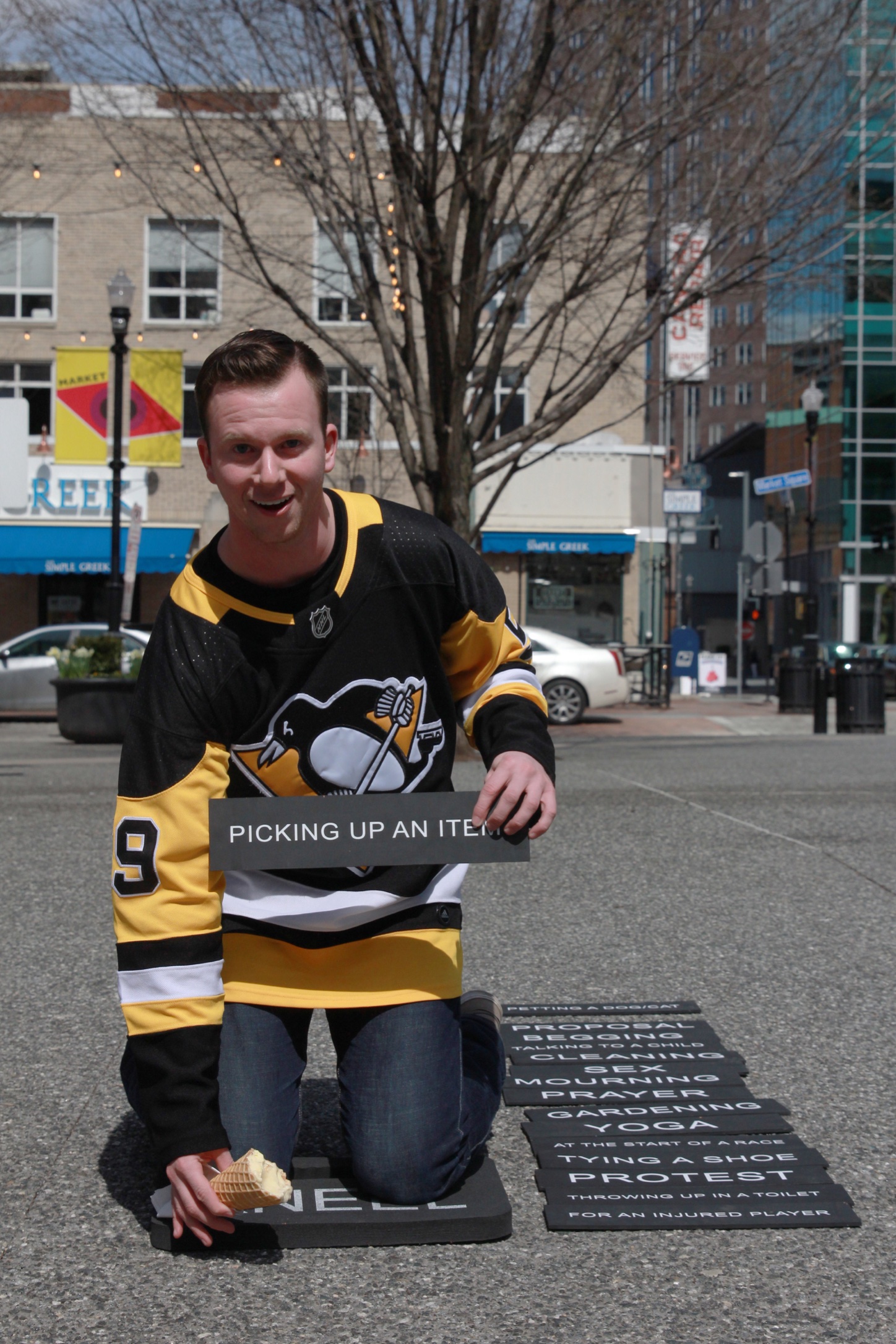Cities Kneeling, 2018
In light of current protests in America, I decided to further explore the concept of kneeling as one form of protest. This gesture has several connotations in American culture. It is an act of submission and reverence, but also one of practicality. Most recently however, the gesture of kneeling has become controversial. Kneeling by prominent sports figures to call attention to social injustice has been vilified by commentators including the President of the United States. The irony of the anger regarding the prayerful and peaceful gesture of kneeling is a cultural phenomenon I chose to explore. Through personal experience and through this project, I have found that the word “kneel” makes people slightly, if not very uncomfortable.
To explore cultural connotations of kneeling, I constructed a photo experience in Pittsburgh. The venue included a gardening pad, and 16 signs with verbs and phrases describing reasons to kneel. I asked people if they would pose for a photo, explaining the project as exploring the gesture of kneeling. I then asked them to select a reason for kneeling and kneel for the photo holding the sign.
In asking strangers to have their photos taken and consider the gesture of kneeling, it interrupted their daily life in a contemplative way. With this project came a power dynamic where participants cede power to me as the artist with the power to represent them as I choose in my work. However, participants have the power to influence the work and create their own statement about the concept of kneeling. The fact that so many people of diverse backgrounds and ages agreed to participate speaks to the power of this gesture and its current and evolving importance in American culture.
The results of this photographic survey were confounding. Before counting, it was clear that “Petting a Dog/Cat” was the most popular sign to be chosen. The least popular sign chosen was “Mourning”. This suggests a dynamic in participation and investment in this participatory project. It is easy to admit to kneeling for a dog/ cat. It is a non-political and happy gesture. Selecting the word “mourning” is an emotionally difficult choice — especially in front of a stranger.
Each choice provided different emotional, political, social and even economic implications for participants. “Cleaning” may have been seen as an economic or domestic marker. “Sex” or “Throwing Up” could be seen as a marker of participation in culture of fun and excess. Other choices were actions suggesting love and care, such as “proposal” and petting a dog”. Several choices connoted some sort of reverence or submission, such as “prayer”, “mourning” and “surrender”. The outlier choice was the sign “protest”.
The photographs create a mosaic of diverse faces and bodies in the urban center of the city of Pittsburgh. Despite the seeming solemnity of the gesture of kneeling, there is an overall sense of joy in the photographs as a whole. The disruption of thinking about the idea of kneeling seemed to create a community–however fleeting– in the park.



